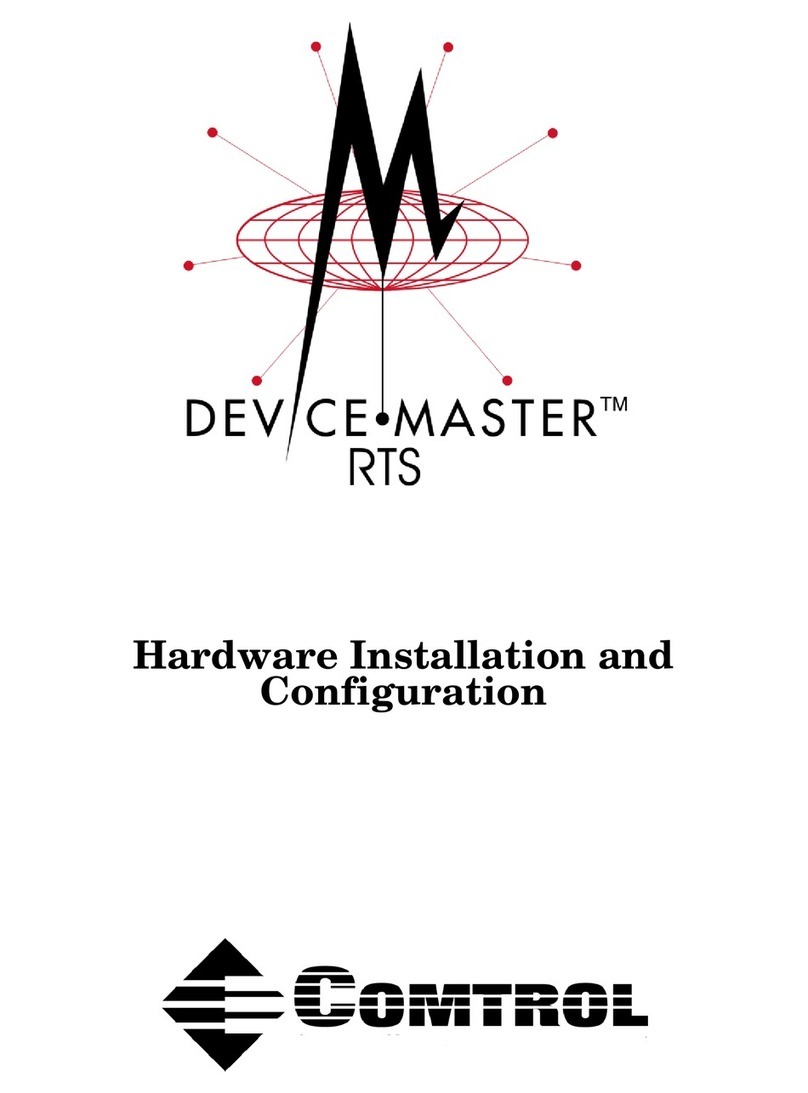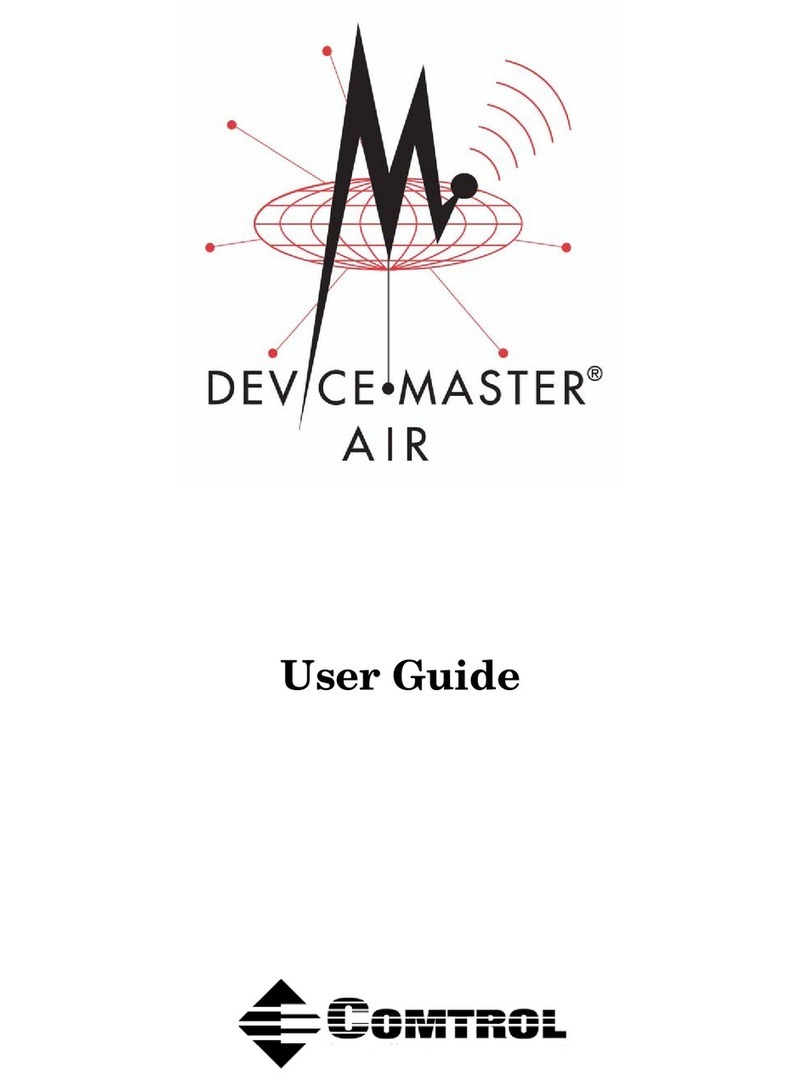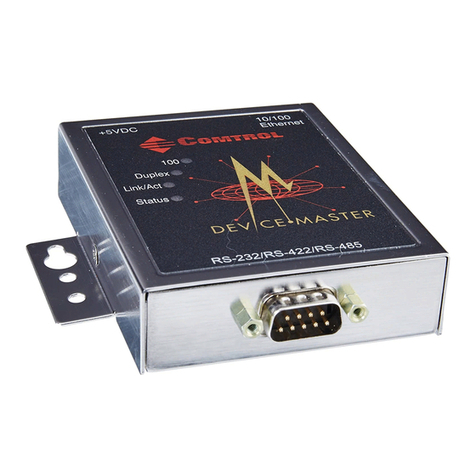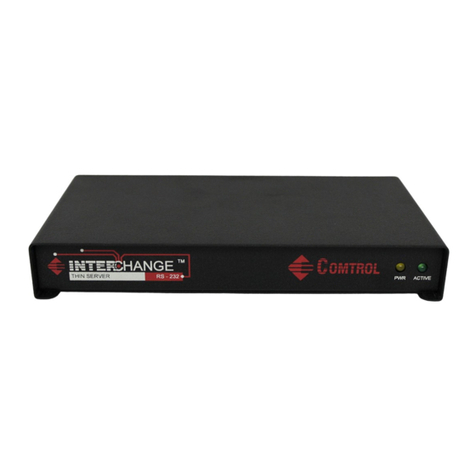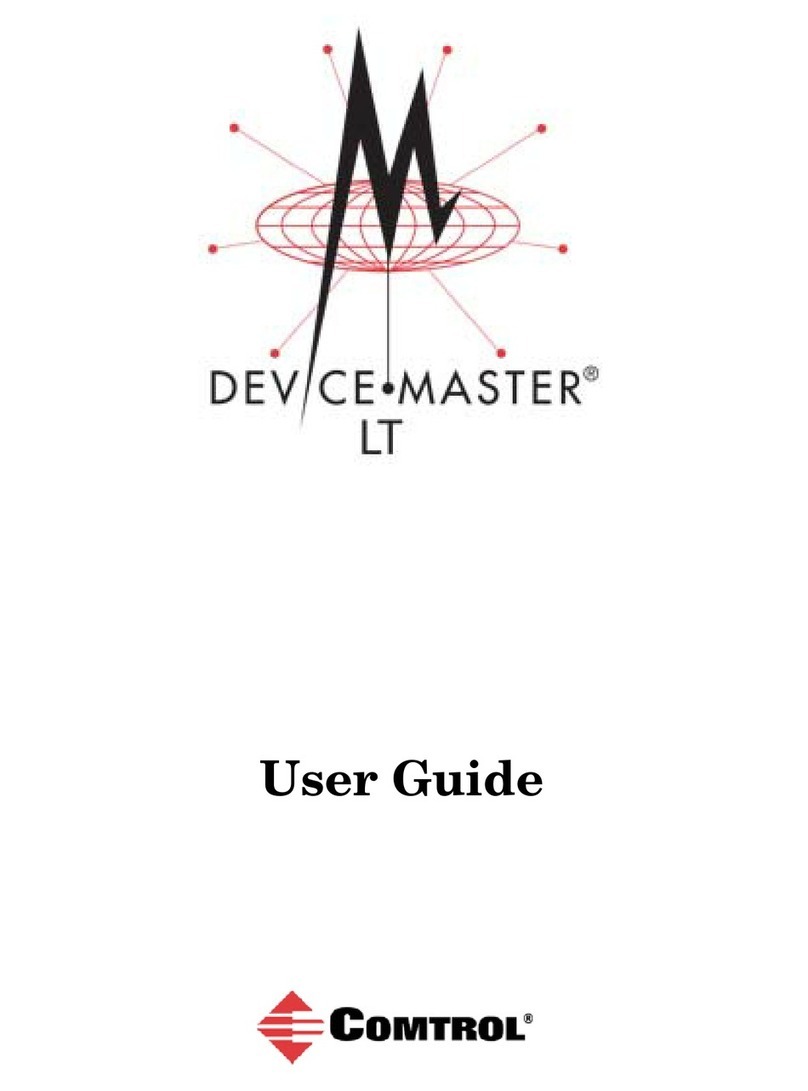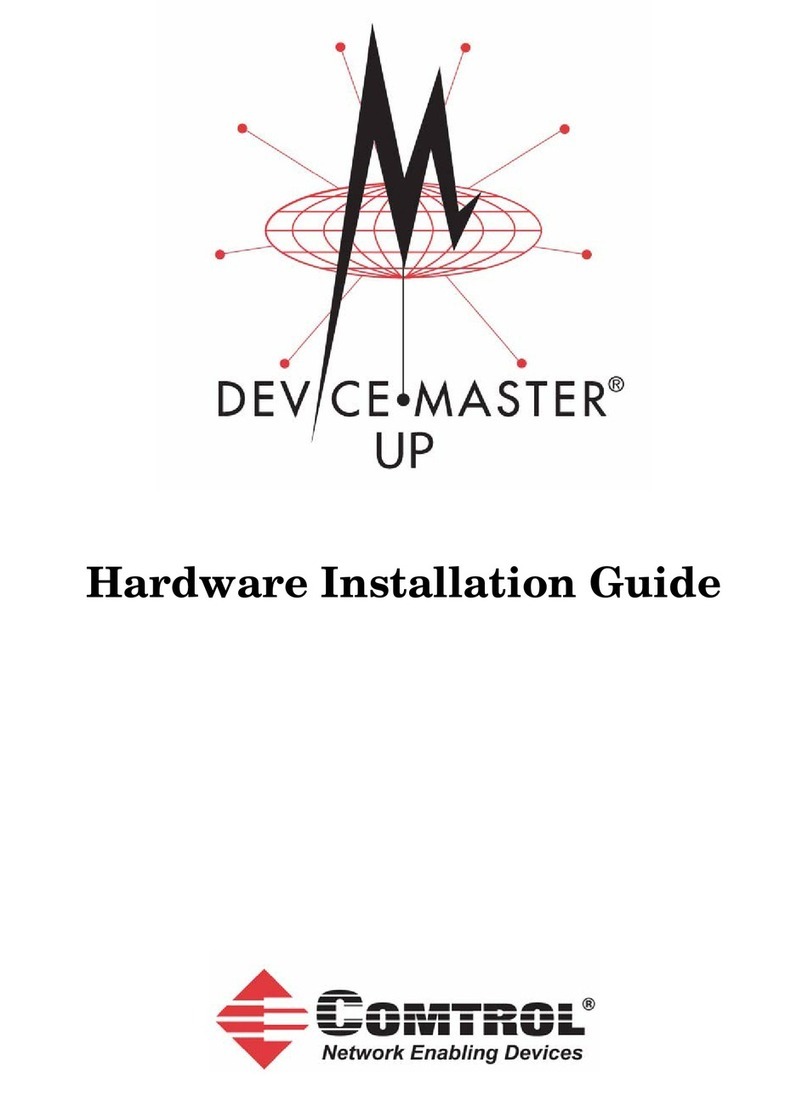
8Installing the DeviceMaster 500 and the SICK LMS Scanner (Windows): 2000472 Rev. C
4-Port Installation (99444-2)
4-Port Installation (99444-2)
Use the following procedure to set up the 4-port DeviceMaster 500 and LMS
scanner at 500K baud. Install the DeviceMaster 500 hardware using the following
procedure:
1. Record the MAC address, model number, and serial number of the
DeviceMaster 500 on the customer service label provided.
2. Connect the DeviceMaster 500 to the same Ethernet network segment as the
host PC using one of the following methods:
•Ethernet hub or switch (10/100Base-T): Connect to the port labeled UP on
the DeviceMaster 500 using a standard Ethernet cable.
•Server NIC (10/100Base-T): Connect to the port labeled DOWN on the
DeviceMaster 500 using a standard Ethernet cable.
Note: Do not connect scanner until RS-422 has been configured for that port
in the driver. The NS-Link default port setting is RS-232.
3. Apply power to the DeviceMaster 500 by connecting the AC power adapter to
the DeviceMaster 500, the appropriate power cord for your location to the
power adapter, and plugging the power cord into a power source.
4. Verify the Status LED has completed the boot cycle and network connection for
the DeviceMaster 500 is functioning properly using the table below.
Go to Software Installation on Page 9 to complete the installation.
LED Descriptions
PWR
LED on the front panel of the DeviceMaster 500 is lit, indicating
you have power and it has completed the boot cycle.
Note: The PWR LED flashes while booting and it takes
approximately 15 seconds for the bootloader to complete
the cycle. When the Bootloader completes the cycle, the
LED has a solid, steady light that blinks approximately
every 30 seconds.
LNK
ACT
The LNK ACT LED is lit, indicating
that you have a working Ethernet
connection.
COL If the COL LED is lit, there is a
network collision.
100
If the 100 LED is lit, it indicates a
working 100 MB Ethernet connection
(100 MB network, only). If the LED is
not lit, it indicates a 10 MB Ethernet
connection.
LNK
ACT
COL
100
10/100 NETWORK
UP DOWN
